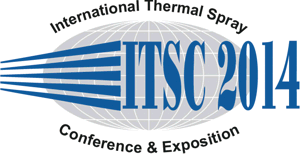| Abstract: |
The splat formation of HVOF sprayed cermet particles is highly dependent on substrate conditions. WC-Co particles impacting on a mild steel substrate showed almost no sign of material splashing. Splats of the so called flower-type do not occur here. The plastic deformation of the mild steel substrate absorbs most of the energy resulting into a nonelastic impact. Splats on a hard polished WC-Co coating showed a completely different behavior. Another determining factor is the carbide size in the powder particles. Fluids with very small particles are known to have a lower viscosity than fluids containing bigger particles. This effect might also be applicable to the material flow during splat deformation at impact.
The present work investigates the interdependency of Splat formation and substrate properties as well as the question, if the carbide size has significant effect on the splat flattening behavior. It was found, that increasing substrate hardness leads to a higher percentage of flower-type splats while the effect of the substrate temperature in the range from 50°C to 300°C leads to a more ring-shape formation. The carbide size has significant influence, too. Still, it is hard to distinguish between the influence of carbide size and particle temperature, as the powder with fine carbides shows much higher particle in-flight temperatures than the standard powder at same parameters.
|
|
